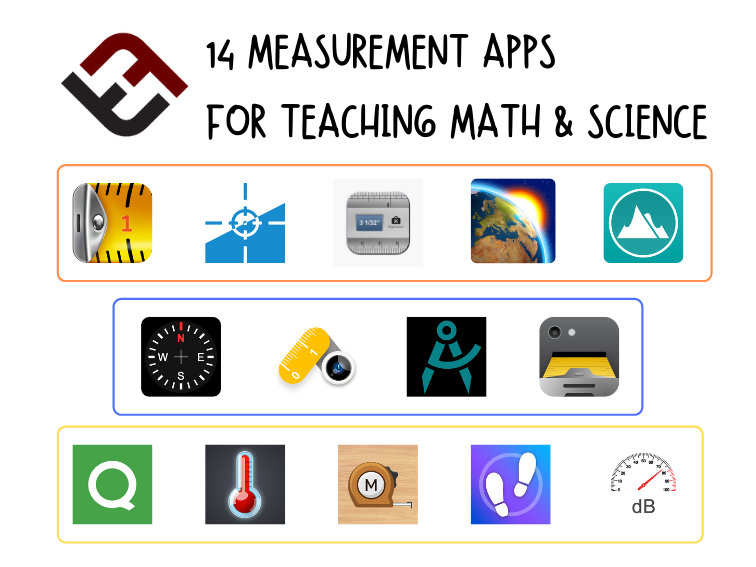
Use These Measurement Apps For Math And Science Lessons
If you teach math or science, you will likely find yourself asking your students to take out their rulers, compasses, protractors, thermometers, altimeters, and other measuring devices. Being able to see with a ruler and a protractor how a triangle with two equal sides really does have two equal angles can be powerful.
Glenda Stewart-Smith of Surrey School District #36 in Canada, along with TeachThought staff, helped put together this collection of iPhone and iPad apps that offer all of these measuring abilities and more.
What apps do you use for taking measurements? How might you help students utilize some of these apps in hands-on or project-based learning activities?
Measure — bedroom dimensions, distant buildings, height, and more — to your heart’s content! Science teachers can create labs to teach students how to measure and predict the trajectories of various objects.
Use this app to measure any kind of angle — the app projects the angle on your screen, which you can adjust to fit the object you’re photographing. Science or math teachers can engage students in learning about Earth and how its tilt relative to the Sun has implications for temperature and climate.
This app can be used as a level or to measure the slope of objects. Support mathematical thinking and measurement skills by connecting this tool to a geometry unit on slope and angles. The app can be used to support data collection and analysis of unique environments and ecosystems.
This app measures directional location, as well as latitude, longitude, altitude, speed, magnetic field power, and more. Geography teachers can utilize the Compass app in WebQuests or scavenger hunts to help students learn how to locate a specific place according to its latitude and longitude coordinates.
EasyMeasure allows you to use your camera to measure the distance of objects. Use this app to estimate and then solve distances in real-life situations and settings — this can help students create mental benchmarks for measurement and develop a deeper understanding of what a distance measurement actually is. This could be used in math to develop understanding of distances and in math and science to collect data, make comparisons, and solve problems.
Use GPS signals to identify your current location, height above sea level, barometric pressure, and water boiling point. Science teachers might set up a lab to help students understand which areas in their community are more prone to flooding, due to their elevation.
This app tracks blood pressure, heart rate, body fat percentage, muscle percentage, bone percentage, water percentage, body mass index, weight, and irregular heartbeats. Physical education teachers can help students understand their own measurements in order to make healthy lifestyle choices. They might prompt students to track their heart rates over different points in a workout or physical activity, then have them consider what actions increase their heart rate and what actions decrease their heart rate.
Users can obtain precise sizes and dimensions of objects using their phone camera by simply indicating an aim mark and moving the phone around the object. Math teachers can prompt students to identify the measurements of different objects to compare their circumferences, areas, diameters, etc.
This app turns your device into a scrollable ruler that will extend over one meter (or four feet). Use for any measurement activities from Kindergarten to Grade 12.
Smart Measure’s telemeter uses trigonometry to measure the distance between objects, as well as the height of an object. Math teachers can utilize this app when designing hands-on activities for learning sine, cosine, tangent, and other trigonometric content.
Sound Meter’s built-in decibel meter measures volumes up to 90 dB and displays results in graph form. Physics teachers might demonstrate how to use this app for students studying sound waves.
This app counts your steps through built-in sensors. It’s a great app for a unit in health or physical education, where instructors can show students how to track calories burned, walking distance, etc.
Identify the outdoor temperature, humidity levels, and barometric pressure from your local weather station! Science teachers will find this app useful when planning units centered on weather and climate.
You can get information about weather conditions and predictions for chosen locations. This includes temperature, wind direction and force, humidity, dew point, and UV index. This could be used for data collection, organization, and display as part of any Kindergarten to Grade 12 curriculum.
